The first lesson we are taught in the Participatory Video training by NGO InsightShare taking place last October in Oxford, UK, is that mistakes are great! This is reassuring to many attending the week-long seminar, as making and screening a video to an audience can be, even for an experienced film-maker, a daunting task. Perhaps this approach is to put people unfamiliar with sophisticated technical equipment at ease.
We learn that for people in distant developing countries, often with little or no access to electricity, there are real challenges to overcome to get to grips with the Participatory Video process. Yet despite the challenges, among those involved in a growing global network of practitioners, there is a shared experience that participatory video, or ‘PV’ in short, generates remarkable results.
InsightShare is a key organisation at the forefront of pioneering and developing this methodology. PV first evolved in Canada in the late 1960s. Don Snowden was an early pioneer who developed the PV methodology at a small fishing community on Fogo Island in Newfoundland. InsightShare has been actively building the skills of communities worldwide since it began in the late nineties. Since then it has accrued a deep body of knowledge used to refine the effectiveness of its teaching.
The workshop curriculum is developed by drawing on years of accumulated hands-on experience in the field. Workshops are practically orientated with participants encouraged to learn by doing. At the end of the process the participants can showcase a tangible outcome of their efforts – their own video.
Although a simple concept at its core, implementing the PV process in the field can be fraught with difficulties. This is especially so as many of the communities with which InsightShare works are poor, often exploited and at the margins of society. Many have difficult issues to confront which can sometimes include tensions within the community itself or conflicts with powerful external actors such as corporations or governments.
Simply put, PV is a way of teaching people to make their own videos using video cameras and editing equipment. Used to support communities in developing countries, it has been gaining credence for some years as a way of providing them with a vehicle to identify and amplify their collective voice.
Many of those who have experienced the workshop-led process say they have found the experience empowering because it provides a way in which they can express themselves, their culture and opinions, without interference from outsiders who often promote their own agendas.
“They are open to it. So it’s another way of building community… that for them is really new, as a way of addressing their issues, their problems, their situations, or just showing what is beautiful within their territory. So I think they realise that this approach is different.” explained Thor Edmundo Morales. He has been an Associate with InsightShare since 2015, facilitating trainings in his native Mexico and more recently Liberia and Kenya in Africa.
The practical dimension of PV is to provide communities with the skills and equipment to produce their own videos about the lives of their community, their neighbours, relatives and each other. Then the process enables them to use these videos in ways that they find useful – however they decide that might be.
A typical film screening premiere will first entail showing the films to the community itself, so that everyone involved can identify with the results and share in the collective experience. Often this leads to discussion and self-reflection which can deepen understanding of important issues within the community.
“I think communities see themselves within the mirror which is the screen. Seeing themselves in the video, they start spotting new problems, issues, concerns or things they like, that they haven’t seen before.” explained Thor.
Many of InsightShare’s projects are with Indigenous People, often living in remote regions, and frequently with little access to services that we take for granted such as electricity. So it is something of a paradox that the PV methodology is quite heavily laden with high-tech equipment requiring an electricity power supply.
This issue throws up a bundle of technical and teaching issues which the PV methodology needs to overcome and address in order to be successfully adopted. People living in marginal circumstances are often dependent on subsistence livelihoods, making the most of the local environment to provide through forest foraging, agriculture, fishing or animal husbandry. Often participants will not have come into contact with modern equipment such as video cameras and computers in their day to day lives, and these will be unfamiliar to them.
The introductory process involves a series of exercises to help participants get acquainted with the concepts and equipment. Thor explained how he found workshop participants in Africa initially fearful of the technology, but this soon changed: “When they first saw the computer they were really afraid to use it and then after about two hours they were like, oh this is so easy,” he said.
“In Mexico many people we work with, particularly amongst the Yaqui, they had never touched a camera or computer before.” explained Thor. The Yaqui indigenous people live in the Sonora desert region in Northern Mexico. They have faced violence and intimidation as companies construct a gas pipeline across their territory, infringing their rights and threatening the fragile environment.
Anabela Jeka Carlon Flores, an indigenous Yaqui lawyer, is fighting the pipeline with her community of Loma De Bacun. In April 2016, Anabela’s community won a legal ruling requiring suspension of pipeline construction across Yaqui territory. However, the companies behind the pipeline: SEMPRA and INOVA, have ignored the court ruling and continued building.
Undeterred Anabela continued campaigning for justice, but in December 2016 she was kidnapped along with her husband and once released fled fearing for her life.
Anabela attended an InsightShare workshop with other members of her community in 2015 and soon came to appreciate the benefits: “The main benefits are that people are really thinking about their land, their culture, they are questioning. Before you cannot really see that they question big projects.” said Anabela, at a safe location some distance away from her home community, shortly after her kidnap ordeal. Soon she plans to overcome the threats she has received and return home.
Different communities around the world find PV useful for different reasons explains Thor: “The Yaqui use the cameras to record interviews, to show as proof to the Inter-American Commission on Human Rights, for the struggle they were having. They gathered a lot of interviews and sent them as evidence to sustain their case,” he said.
While InsightShare refrains from getting directly involved in community struggles, it does equip communities with the tools and skills to be able to put forward their perspectives and opinions, sometimes to policy-makers or companies that are disrupting their lives. This is in keeping with the now widely established view that effective development must recognise power relationships and equip people with the skills to be able to participate in the discussions and decision-making processes that effect them.
The Maasai people of Kenya and Tanzania in East Africa are nomadic pastoralists who regularly move with their herds of goats and cattle. After independence it was agreed that the Maasai would move from their lands to allow the creation of the Serengeti game reserve. They were given new lands in the Ngorongoro region, which is now hotly contested by different stakeholder’s including the government, conservationists, investors, the tourism industry and the Maasai people themselves.
The Maasai say that in recent years their community rights to use the land have been increasingly eroded and ignored. Along with big game animals The Maasai became a familiar part of the safari tour, regularly appearing in safari promotional literature and media coverage.
“The image and the name of the Maasai is used to sell everything from the safari tour to I don’t know – hand soap. Just everything. It is a very heavily exploited image. One that is not in the control of the Maasai people themselves.” said InsightShare facilitator Gareth Benest, who has held PV workshops with the Maasai.
“Everyone was distressed and emotional. We discussed how the Maasai brand is worth an estimate US$10 million annually but the community gains no benefit. This was one of the most difficult sessions I have ever had with the group.” said Gareth.
It is not only ongoing voyeurism of the Maasai and exploitation of their image. Since colonial times a romanticized view of their lives has been constructed by outsiders projecting their own view of the Maasai upon them, which may be completely inaccurate. It may also gloss over pressing issues.
Gareth explained how at their first workshop the Maasai participants were excited to be able to tell their own story: “They said that we’ve had journalists come and go. We’ve had film crews, we’ve had photographers come and go, and we’ve seen how other people tell our story, and now it’s time for us to tell our own story.”
“PV is a particularly interesting and exciting tool in enabling a community that has never benefited from being able to represent themselves in the world, to start to take control of their own image, albeit in a small way to begin with.” Gareth explained.
Sometimes the burning issues for a community have less to do with pressures from outside and more to do with contested issues within the community itself such as changing attitudes towards cultural traditions. Alternatively, it is common for powerful actors seeking to exploit communities, to use divide and rule tactics (such as bribes, intimidation and offers of work), to create conflict within communities, so weakening their opposition.
“I was given an award, a distinguished human right defender” said Samwel Nangiria of NGO-Net in April 2017. He was awarded the Rural Human Rights Defender of the Year by NGO the Tanzania Human Rights Coalition. “Human rights have no borders and its protection calls for global community. It was really emotional. The Olosho video was screened to show the voices of the people… I mean I had to shed tears of hope and happiness. There will be a big community reception party in Loliondo… It’s a victory for the entire community.” said Samwel.
Samwel is from Loliondo in the Tanzanian state of Arusha and has been involved in PV since the first workshop was held in 2015. He said that PV has improved, “Unity among communities, and in particular the clans within Loliondo.” He said, “the video has restored trust” and bridged the breakdown in communication between segments of the community and clans, “that was rampant before.” Samwel explained.
“Three of them have had over a year of arrests, of beatings, Samwel was tortured.” Gareth said, explaining that the impact of the video has caused the government to review its approach. “Previously the government thought, well all we have to do is silence the troublemakers, get rid of these individuals and we’ll be able to implement our own plans for the land. When the video came out there was a realisation that even if they do silence those people, they can’t stop the community’s voice from being heard. The government changed its whole approach because of this. It no longer saw force as an option.” Gareth explained.
Samwel relayed how his community found the PV process provided a way to amplify their concerns and ensured that they were heard, even in political decision-making circles: “The Olosho video was taken by many politicians at the last general elections (in 2015) as a starting point for our community based land rights campaign.”
“Recently, the video was re-screened before the government mission that was in the district trying to strike a balance between wildlife and people in the Loliondo Areas. The mission was seeking for the community position with regards to wildlife conservation and investment in the village lands.” said Samwel.
A finished video product is usually, though not always, a significant outcome of the PV process. However, Gareth is keen to stress that their model of PV is not driven by video outputs. Sometimes there are situations in which members of the group consider that releasing their film could attract adverse attention, exacerbate community divisions or provoke repression from external forces.
The most important result of the experience is not necessarily the final video, but more the learning and experiences shared by community members as they go through the production process.
Assessing the precise impact of the PV process is arguably impossible as it is not just about counting the number of finished videos produced. However the growing body of monitoring and evaluation learning that InsightShare has gathered, demonstrates the effectiveness of the methodology, and this has proved attractive to donors, ever keen to show that their money has real and tangible outcomes.
Once the workshop is finished and it is time for InsightShare’s facilitators to move on, the question arises as to what happens in future. InsightShare is always keen to leave behind the hardware (camera, sound equipment and laptop) to enable communities to continue making videos in their own time and for their own needs.
Samwel explained that PV has had a “high multiplying effect.” and he is working to train others in the community to pass on the skills: “We would like to advance the capacity-building of the group (‘Oltoilo-le-Maa’, meaning ‘Voice of the Maasai’) to establish a simple and functioning community media hub.” he said.
“The videos we created in Mexico, I took them to Kenya and Liberia and we showed them.” Said Thor, explaining the benefits of sharing and reflecting on PV work, no matter where in the world it has been produced. Thor explains the wider strategy being pursued for networking groups together: “InsightShare is trying to make a network where people trained by InsightShare actually meet each other…Put people together so they can interact.” he said. This network of regional hubs is now taking shape to share experiences of PV worldwide.
As the workshop wraps up in Oxford the group forms a circle and reflects on the six day training. Everyone shares how the intensive learning experience has both touched and challenged them in different ways. On one thing everyone agrees – the PV process involves much more than simply making a video.
-
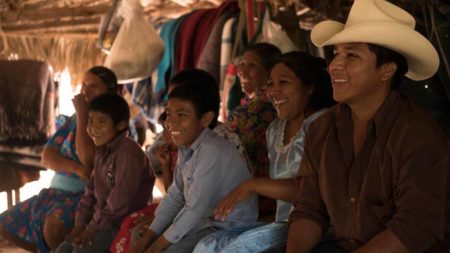 Indigenous facilitators reached the remote village of Bavicora in Mexico after a 9 hour mule ride! They introduced participatory video to this Guarijio community living in the lower sierras on the border between Sonora and Chihuahua states. Credit: Thor Morales/InsightShare.
Indigenous facilitators reached the remote village of Bavicora in Mexico after a 9 hour mule ride! They introduced participatory video to this Guarijio community living in the lower sierras on the border between Sonora and Chihuahua states. Credit: Thor Morales/InsightShare. -
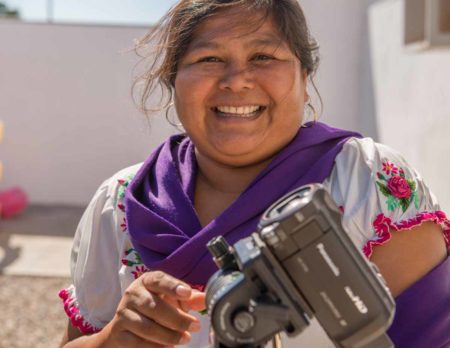 La Marabunta Filmadora began life as community video project bringing Comcaac and Yaqui participants together for the first time in 2010. Now they make participatory videos with Guarijios, Mayos, Pimas, and Raramuri indigenous groups, reaching right across northern Mexico. Credit: Thor Morales/InsightShare.
La Marabunta Filmadora began life as community video project bringing Comcaac and Yaqui participants together for the first time in 2010. Now they make participatory videos with Guarijios, Mayos, Pimas, and Raramuri indigenous groups, reaching right across northern Mexico. Credit: Thor Morales/InsightShare.
Learn more about PV on the InsightShare website.
By Rod Harbinson

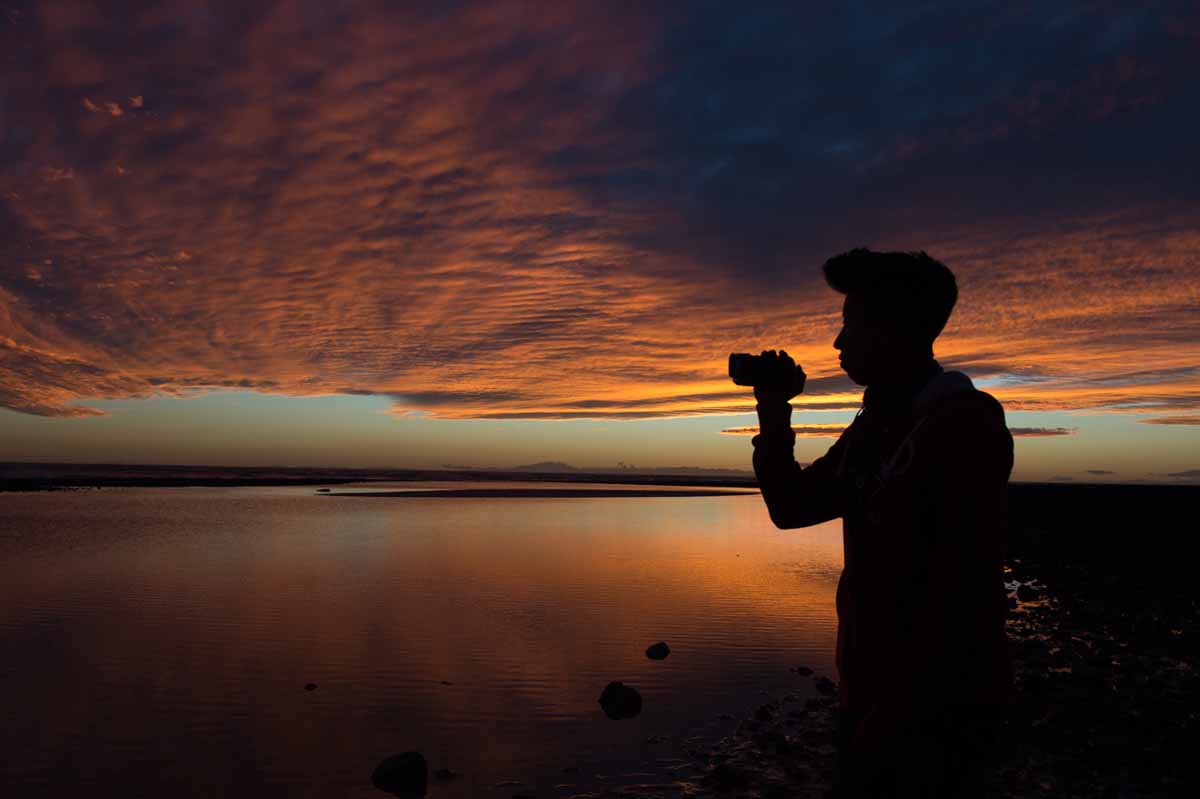
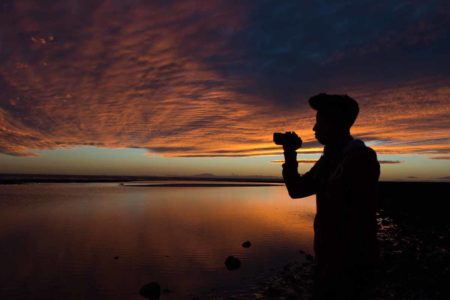
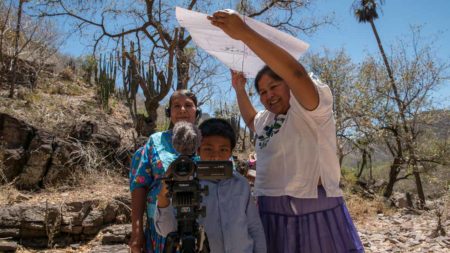
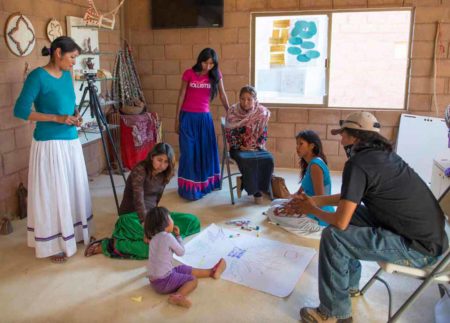
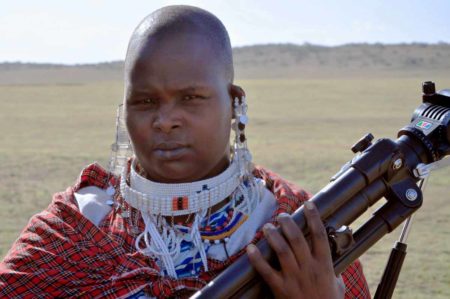
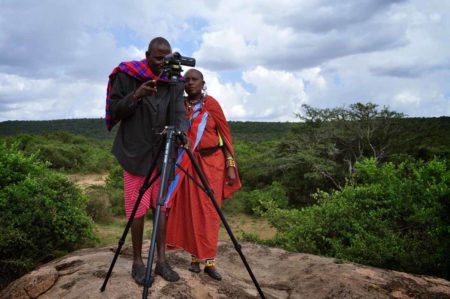
hi rod, what a wonderful work you guys at insightshare are doing with your participatory video projects. actually iam a graduate of participatory communication for development and social change. i graduated with honours degree from the university of goroka in papua new guinea a developing country in the south pacific.your article is indeed inspirational because that was exactly my research thesis – documenting people’s voices using video technology. iam keenly interested to join your team and maybe invite you guys to papua new guinea to conduct trainings on pv..this methodology is EXCITING AND A NEW APPROACH IN DEVELOPING COUNTRIES LIKE PAPUA NEW GUINEA. THANK YOU
“PV is a particularly interesting and exciting tool in enabling a community that has never benefited from being able to represent themselves in the world, to start to take control of their own image,albeit in a small way to begin with”. ..so revealing of competitive varied global interest